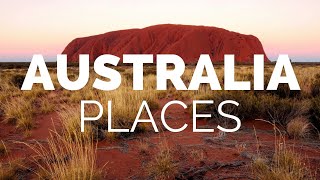Saturday, 10 January, 2026г.
















Где искать: по сайтам Запорожской области, статьи, видео ролики
пример: покупка автомобиля в Запорожье
Melbourne - Australia, Part 1
Melbourne (Source: Wikipedia)
Melbourne is the capital and most populous city in the state of Victoria, and the second most populous city in Australia. The name "Melbourne" refers to an urban agglomeration area (and census statistical division) spanning 9,900.5 km2 that comprises the greater metropolis -- as well as being a common name for its metropolitan hub, the Melbourne City Centre. It is a leading financial centre in Australia and the Asia-Pacific, and has been ranked as the World's most livable city since 2011 -- according the Economist Intelligence Unit (and in the top three since 2009).
Melbourne is located on the large natural bay of Port Phillip, with its City Centre situated at the northernmost point of the bay -- near the estuary of the Yarra River. The metropolitan area extends south from the City Centre, along the eastern and western shorelines of Port Phillip, and expands into the hinterlands. The City Centre is located in the municipality known as the City of Melbourne, and the greater metropolis consists of a further 30 municipalities. Melbourne has a population of 4.25 million, and the fastest growing population among Australian capital cities. Inhabitants of Melbourne are called Melburnians.
Founded on 30 August 1835, by settlers from Launceston in Van Diemen's Land (in what was then the Colony of New South Wales), it was declared a Crown settlement in 1837. The settlement was named "Melbourne" by the Governor of New South Wales, Sir Richard Bourke, to honour the British Prime Minister of the day William Lamb, 2nd Viscount Melbourne. It was declared a city by Queen Victoria in 1847, and became the capital city of the newly created Colony of Victoria in 1851. During the Victorian gold rush of the 1850s, it was transformed into one of the World's largest and wealthiest cities. After the federation of Australia in 1901, Melbourne served as interim seat of government for the newly created nation of Australia until 1927.
A major centre for Australian performing and visual arts, Melbourne is often referred to as Australia's cultural capital. It is the birthplace of Australian dance styles; the Melbourne Shuffle and New Vogue, the Australian film industry (including the world's first feature film), Australian impressionist art (known as the Heidelberg School), Australian rules football, and the Australian television industry. More recently, it has been recognized as a UNESCO City of Literature and an international centre for street art. It is home to many of Australia's largest and oldest cultural institutions such as the Australian Centre for the Moving Image, the Melbourne Cricket Ground, Melbourne Museum, Melbourne Zoo, the National Gallery of Victoria and the UNESCO World Heritage-listed Royal Exhibition Building.
The main passenger airport serving the metropolis is Melbourne Airport, which is the second busiest in Australia, and the Port of Melbourne is Australia's busiest seaport for containerised and general cargo. The main metropolitan train terminus is Flinders Street Station, and the main regional train and coach terminus is Southern Cross Station. Melbourne is also home to the world's largest tram network.
Теги:
Brisbane Queensland Australia European Settlement Redcliffe New South Wales Cairns Wellington Hodgkinson Port Douglas Sydney Great Barrier Reef Outback Tasman Sea Penal Colony Opera House Bondi Manly Royal Rugby Bridge Harbour Darling Melbourne Pacific Queen Victoria Colony Cricket Southern Cross Hobart Townsville Perth Adelaide Darwin Gold Coast Toowoomba Newcastle Maitland Ballarat Canberra Queanbeyan Sunshine Coast Launceston Wollongong Albury Wodonga Downunder Kangaroo
Похожие видео
Мой аккаунт


 У вашего броузера проблема в совместимости с HTML5
У вашего броузера проблема в совместимости с HTML5


